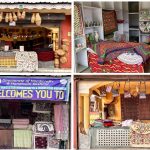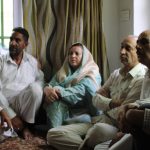Public engagement with heritage sites is imperative for cultural preservation. It also has a positive mental health impact on residents. Besides generating a cultural economy by creating entrepreneurial opportunities, public engagement with heritage creates spaces of leisure, inspiration and belonging in stressful urban settings. Given that rapid urban development often comes at the cost of heritage, digitising built heritage fosters greater public engagement and awareness and leads to effective preservation and restoration. Morphological modelling, early warning systems, archiving through database models using tools like Heritage Building Information Modelling (H-BIM), Augmented Reality (AR), Virtual Reality (VR), Light Detection, and Ranging (LiDAR) and digital twins are increasingly helping countries across the world to conserve their urban built heritage with improved public participation. A recent NITI Aayog report cites 3,691 monuments under the Archaeological Survey of India (ASI), 5,000-plus under state governments, and places of religious importance under endowments and trusts. However, this database does not account for many of India’s urban heritage sites spread across 60 historic cities, averaging around 500 structures per city. It also excludes around 80,000 structures in the rural and tribal settlements, clubbed under the ‘Cultural Landscape’ category. Non-governmental Organisations and government bodies such as the ASI, Indian National Trust for Art and Cultural Heritage (INTACH), National Mission on Monuments and Antiquities (NMMA), and the Indira Gandhi National Centre for the Arts (IGNCA) are the primary contributors to documenting heritage structures in India. However, this collective effort faces significant capacity constraints, from a shortage of a skilled workforce to inadequate funding. Italy, China, and Spain are among the leaders in research on the digital preservation of built heritage. Italy was one of the first countries to test an AR simulation of a block in Cagliari in 2014. China has established the world’s largest cultural heritage conservation system using 3D-GIS visibility analysis to identify hurdles in three scenarios for the Chiang Mai heritage site: i) the actual condition scenario (ACS), ii) the land use scenario (LUS) with the land use ordinance, and iii) the proposed scenario (PPS) incorporating mountain skyline protection. It also deployed Re3D LiDAR and multi-tech collaboration to improve conservation processes. The Shanghai Federation of Literary and Art Circles (SFLAC) developed a digital platform for managing tools and raw data, further simplifying the process. Japan’s Society 5.0 model aims to build a digital twin for every societal heritage element, with reimagined structural business design and development through a “highly integrated system of cyberspace and physical space.” A study of Cortijo del Fraile in Njar, Almera, Spain, used a combination of unmanned aerial vehicle (UAV) photogrammetry with terrestrial laser scanners (TLS) for data collection and H-BIM for the structural analysis, visualisation, and documentation of the site’s ancient structures. Conservation efforts for archaeological sites and historic structures, like the Masonry towers of Tuscany, Italy, relied on The Internet of Things (IoT) and Wireless Sensor Network (WSN) for continuous structural health monitoring. Measures at Italy’s Sassi landscape also used IoT and WSN for accurate simulation and prediction to mitigate the threat posed by high visitor volumes and improve the capacity for priority restoration. The Aerial Photographic Archive for Archaeology in the Middle East (APAAME) and Endangered Archaeology in the Middle East and North Africa (EAMENA) use remote sensing for the geodatabase archiving of physically inaccessible areas. Jordan, like India, faces the challenge of increasing urbanisation damaging their cultural heritage. Jordan is amalgamating multiple databases like the APAAME and EAMENA to implement its heritage protection laws. A 2020 study of Jordan’s digital interventions for conservation highlights the importance of creating a central geo-referencing system and why clarifying goals and end users for digital technologies is crucial at the early planning stage.
Search
Archives
- August 2025
- July 2025
- June 2025
- May 2025
- April 2025
- March 2025
- February 2025
- January 2025
- December 2024
- November 2024
- October 2024
- September 2024
- August 2024
- July 2024
- June 2024
- May 2024
- April 2024
- March 2024
- February 2024
- January 2024
- December 2023
- November 2023
- October 2023
- September 2023
- August 2023
- July 2023
- June 2023
- May 2023
- April 2023
- March 2023
- February 2023
- January 2023
- December 2022
- November 2022
- October 2022
- September 2022
- August 2022
- July 2022
- June 2022
- May 2022
© 2022 Foxiz News Network. Ruby Design Company. All Rights Reserved.










